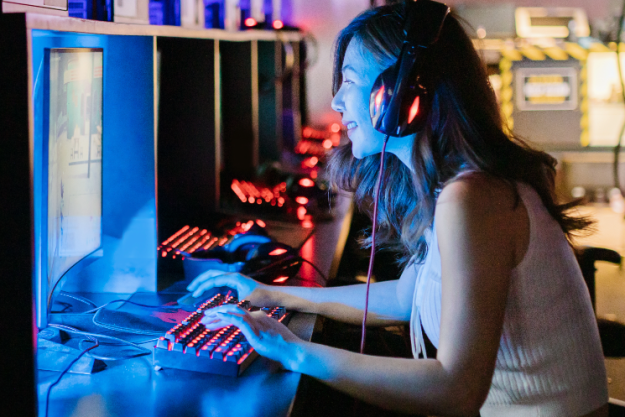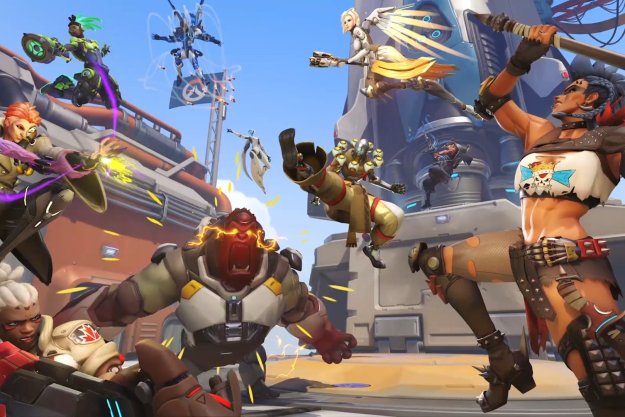
One of my favorite things to do as a kid was watch other people play videogames. This was partly because I sucked at playing videogames, but also because it was fun. As viewer, I could see impending doom before the player (usually my sister) did, squealing in anticipation, enjoying her success or failure with equal measure. In fact, most of the time, I prefer watching games to playing them.
I’m not alone in this. Millions of people watch others play videogames daily. Twitch.tv, Amazon’s game streaming site (Amazon bought Twitch last year for $1 billion), claims over 100 million monthly users. Twitch.tv has become mass-consumption entertainment, with top games like Fortnite eclipsing prime-time television when it comes to viewers.
That’s just the start of it. According to data collected at Thinknum, where I work when I’m not watching someone play Final Fantasy VII for the 32nd time. The number of viewers on Twitch is not only growing, but the number of simultaneous streams across multiple games is accelerating as well.
That expanding blue maw represents the number of concurrent streams on Twitch at any hour since 2016. A minimum of half a million streams, and a maximum of more than two million, are live at any moment. The numbers are only growing, and the average number of streams per day is on a steady rise.

The assortment of games being played is increasing, too. When we filtered Twitch usage data by the number of different games streamed per day for the past half year, the above graph emerged. It shows that 200 days ago, an average day on Twitch.tv saw about 105,000 different games being streamed. Today, that number is above 130,000 – an astonishing growth rate in game diversity of 30 percent.
What was once the domain of a few hundred DOTA streamers is now the fertile playground of classic games, shooters, RPGs, adventures, puzzlers, and more.
Big numbers mean big money
Twitch.tv’s top streamer, Tyler “Ninja” Blevins, pulls in more than $500,000 per month playing Fortnite. He has over 8 million followers along with a whopping 207 million channel views. Just last month, he had 6.7 million followers. That means he’s picking up an additional 44,000 followers per day. Most people would be thrilled to have 44,000 followers in their lifetimes.
Ask yourself when you last worked 58 hours in a single week. Chances are it has been a while.
Another top streamer, Michael “Shroud” Grzesiek, started as a professional eSports player, excelling at Counter-Strike. He retired from pro gaming in 2014 to stream full-time, and he’s making quite a living at it. While he’s never revealed how much he makes, conservative estimates (based on tips and sponsorships) put his monthly pull at around $100,000 per month.
According to Twitchmetrics.com, Grzesiek streamed for 36 hours in just the past 7 days – that’s a full-time job. Ninja has streamed a massive 58 hours in the past 7 days, or 8.3 hours a day for 7 days straight. That’s around-the-clock streaming. Ask yourself when you last worked 58 hours in one week. Chances are it’s been a while. And consider this — Grzesiek often streams to more than 250,000 people simultaneously.
It’s only just begun
Game streaming is such big business that other companies are trying desperately to crowd in the success of Twitch. YouTube already has its YouTube Gaming channel which, while not as popular as Twitch.tv, grew its streamer base by 343 percent in 2017. Microsoft, meanwhile, is trying to catch the wave with Mixer. Streaming tools are integrated into Windows 10 and Xbox One, helping gamers start a broadcast in seconds.
More recently, Facebook launched Level Up, its program to help live streamers on its Gaming Creator platform build audience and make money. The new program includes many Twitch.tv-like features, including paid subscriptions and tips. Given Facebook’s massive audience, it’s likely Level Up will see healthy audience growth in the next few months.

Just like NBC invested in radio and General Electric pumped money into television, companies like Amazon, Google, and Facebook see the writing on the wall, and that means a healthy future for streaming.
Just look at today’s up-and-coming celebrities. Ask anyone under 30 and they’ve likely heard of PewDiePie, ERIubiusOMG, or Smosh. They all launched into pop culture by playing games while others watched. Meanwhile, Twitch.tv is even expanding into streaming beyond just gaming, with channels dedicated to self-improvement, music, food, and animation.
People want to watch others do amazing things, and they’re always on the hunt for the next star. The next generation of stars will come from the world of online video, not television or music. And the biggest stars will do it live, talking to their fans, taking tips, and blowing minds.
Editors' Recommendations
- Move over, Twitch: Facebook Gaming is steadily on the rise
- TimTheTatman is latest streamer to ditch Twitch as protests mount
- YouTube copies Twitch with feature that lets you tip your favorite stars $2
- Google Stadia pre-orders don’t guarantee you’ll get to play on release day
- Twitch gets new logo, brand redesign inspired by gamer community


